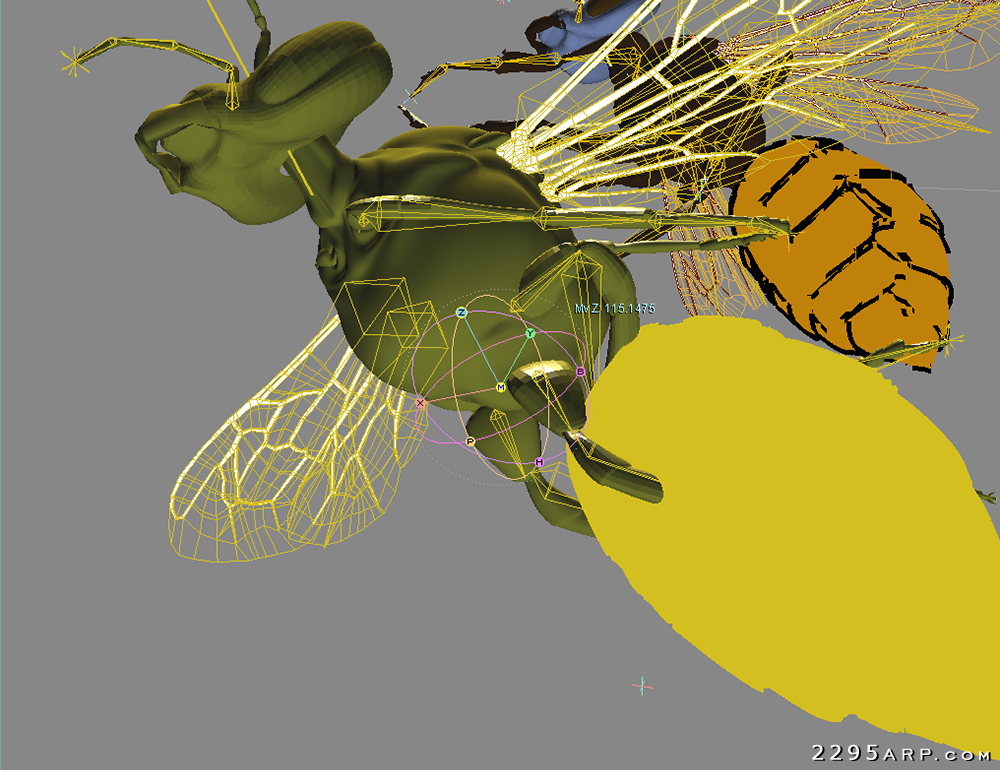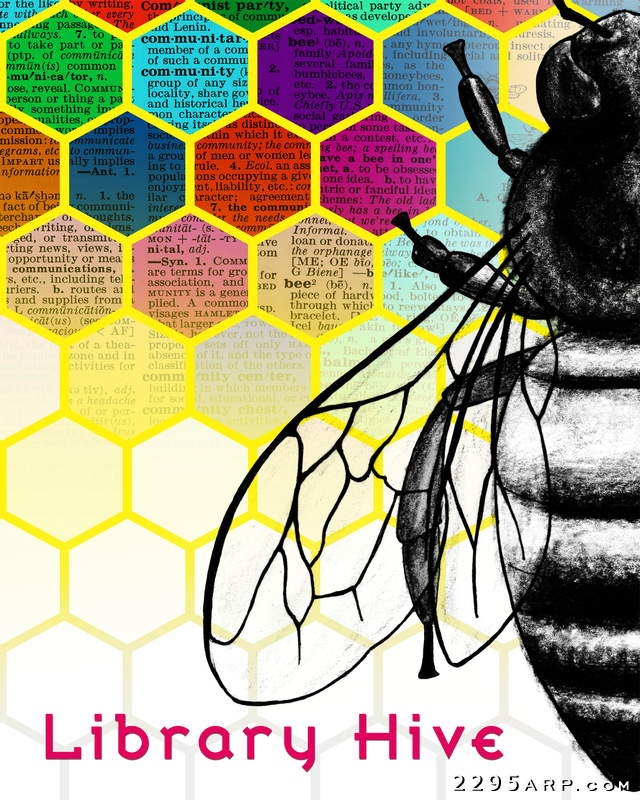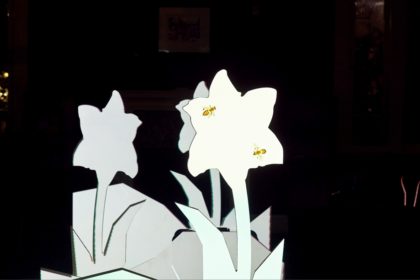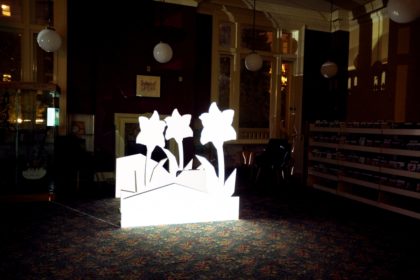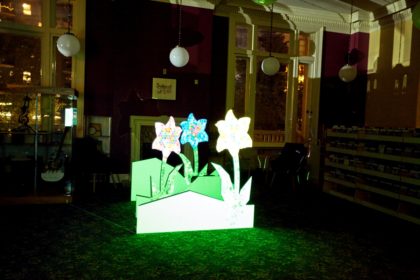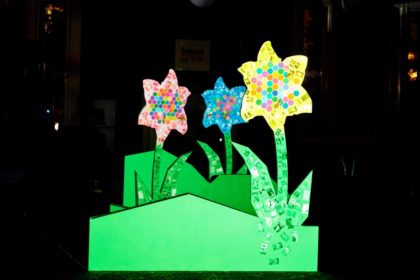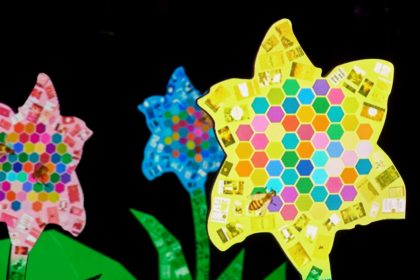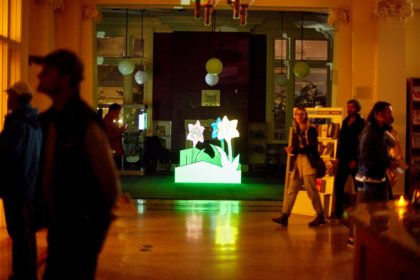Library Hive by Aran Wilkinson-Blanc and Rebecca Reid
Bees!
Don’t bother a bee- it’s busy, it’s working, it has a job to do, it doesn’t have time for you. Bees play an essential role in the ecosystem, being one of the main pollinators and ensuring the
reproduction, development and spread of plants, including a large and diverse percentage of human crops. They, and their communities are linked and entwined with us, our lives and ultimately our survival. It was stated by brilliant physicist Albert Einstein that “If the bee disappears from the surface of the earth, man would have no more than four years to live.”
Too easily do people fall into the trap of seeing a separation between “man-made” and “nature”, failing to see the complex natural systems we are already and have forever been a part of. The systems we create that knowingly or unknowingly we often model after nature’s systems- if they are to flourish harmoniously. We construct our own systems for ourselves, forging communities and networks of collaboration- in this case a library system of public spaces used to gather, share and connect in the present and with the past. We are able to gift our experiences and knowledge directly to each other across lifetimes and around the world. The great exchange of knowledge and vision from the heart of a city to the heart of the world through technology, innovation and
connection.
Public spaces of community engagement play important roles as spaces of collective vision and catalysts for growth in our society. The Library is an inclusive meeting place in which one can learn, have accessibility to resources to develop their mind and projects, provides space for community events, meeting rooms, study spaces and is designed to be used by people of all ages and abilities. The library creates a place in which your life story can connect to the community of your city. A place where you can feel and be apart of a larger system and find your role to keep it alive and well.
Yet these systems require engagement to be maintained- whether it’s repairs to a physical structure, care for a book, monitoring and backup of a computer system or time spent to engage with the space- without energy the systems collapse and we lose the ability to maintain the infrastructure of the “hive” effectively. The social bees know the importance of working together in an industrious manner with intelligence and organization. This cooperation that takes place between many organized parts to keep something running smoothly mirrors the systems in place within a library structure to keep it running effectively.
The physical piece consists of three oversize “pop-up book” like white painted plywood pieces set up in three layers to create a clear foreground, midground and background, each with a large flower shape and a progressively rising ground that creates the illusion of rolling hills. The projection mapping element starts out as stark white light, then animated bees slowly start to fly up between the layers and “pollinate” the flowers. As they do, the scene begins to come to life with the flowers and hills developing a patchwork of color rectangles and hexagons. The rectangles have a ratio 4.3 x 7, the ratio found in mass-market paperback books or “pocket books.” The bees continue to interact with the scene until it is in full technicolor bloom, then fly off one by one, disappearing between the three layers of the installation. The scene loses its color and shape as the bee activity diminishes until the scene becomes white again. The whole loop is about two and a half minutes long.
The work uses the symbolism of the bee and hive to illustrate the community and the library. The grounds of the Memorial Park Library were modeled after a formal Victorian garden featuring rows of garden beds, native and non-native plants and geometric pathways. The visuals connects the landscape that the library is placed on. The “paperback book” rectangles are a reference to the rise of paperback books and increased accessibility to reading through this medium. The bees and flowers would be symbolism for pollination of the mind that occurs through access to knowledge. The library being the “hive” to meet, share and obtain that knowledge by accessible means. Projecting onto the shapes of a cut-out large scale organic flora, the imagery of the important pollinators “the bees” necessary for maintaining the continued growth of the gardens. The bee imagery would be juxtaposed with a patchwork of shapes, an ode to the landscapes geometric pathways and rectangles the size of a classic pocket book. The use of this rectangle size is intentional and would be a subtle commentary on the rise of paperback books and increased accessibility to reading through this medium. The bees and flowers would be symbolism for pollination of the mind that occurs through access to knowledge. The library being the “hive” to meet, share and obtain that knowledge by accessible means.
